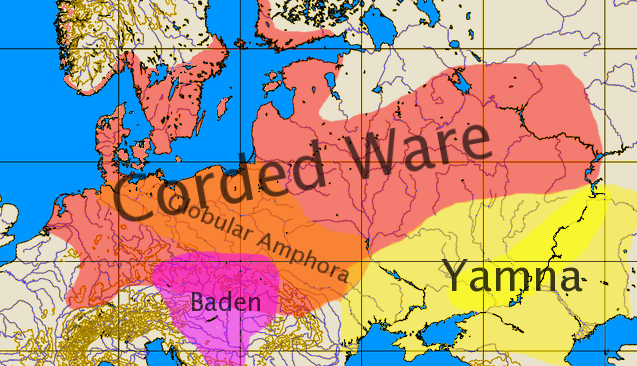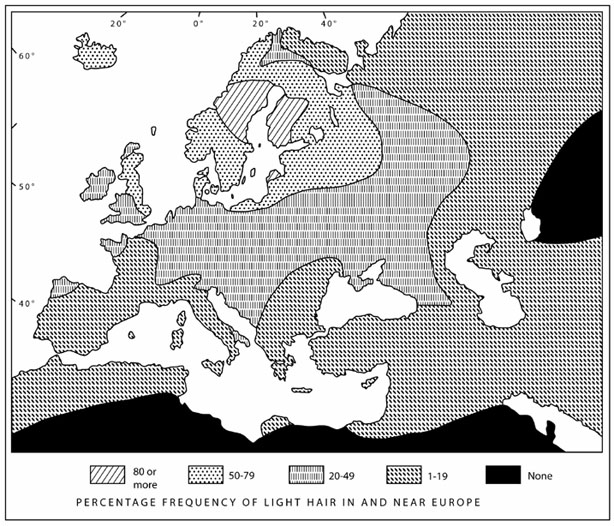Borachio
Way past lunacy
- Joined
- Jan 31, 2012
- Messages
- 26,698
Link to video.
Oooh!
edit: why have I posted this in a thread about Ukraine? Er... I blame Mr Domen and his bad influence.

Stephen Oppenheimer isn't a geneticist, he's a pediatrician with an interest in tropical diseases.
Those people were not even R1b - at least so far there is no proof for presence of R1b individuals in Iberia at that time.


<stuff>


In 2001 X-rays and a CT scan revealed that Ötzi had an arrowhead lodged in his left shoulder when he died,[42] and a matching small tear on his coat.[43] The discovery of the arrowhead prompted researchers to theorize Ötzi died of blood loss from the wound, which would probably have been fatal even if modern medical techniques had been available.[44] Further research found that the arrow's shaft had been removed before death, and close examination of the body found bruises and cuts to the hands, wrists and chest and cerebral trauma indicative of a blow to the head. One of the cuts was to the base of his thumb that reached down to the bone but had no time to heal before his death. Currently it is believed that death was caused by a blow to the head, though researchers are unsure if this was due to a fall, or from being struck with a rock by another person.[45] Unpublished and thus unconfirmed DNA analyses claim they revealed traces of blood from four other people on his gear: one from his knife, two from the same arrowhead, and a fourth from his coat.[46] Interpretations of these findings were that Ötzi killed two people with the same arrow, and was able to retrieve it on both occasions, and the blood on his coat was from a wounded comrade he may have carried over his back.[43] Ötzi's unnatural posture in death (frozen body, face down, left arm bent across the chest) suggests that the theory of a solitary death from blood loss, hunger, cold and weakness is untenable. Rather, before death occurred and rigor mortis set in, the Iceman was turned on to his stomach in the effort to remove the arrow shaft.[47]
In May 2012, researchers using Raman spectroscopy and atomic force microscopy concluded that Ötzi did not die immediately from his shoulder wound. They detected dried blood cells and possibly fibrin in a state of degradation from maturity, suggesting an established blood clot of more than a few days' age.[48][not in citation given]
The DNA evidence suggests that he was assisted by companions who were also wounded; pollen and food analysis suggests that he was out of his home territory. The copper axe could not have been made by him alone. It would have required a group tribal effort to mine, smelt and cast the copper axe head. This may indicate that Ötzi was part of an armed raiding party involved in a skirmish, perhaps with a neighboring tribe, and this skirmish had gone badly.
I can't help feeling this doesn't really belong in a thread on the Ukrainian crisis,
archaeologist Folke Bergman discovered some 200 mummies of fair-haired Caucasian people in the Tarim Basin in Northwest China (a region known as Xinjiang, East Turkestan or Uyghurstan). The oldest of these mummies date back to 2000 BCE and all 7 male remains tested by Li et al. (2010), were positive for the R1a1 mutation
(...)
R1 populations spread genes for light skin, blond hair and red hair
There is now strong evidence that both R1a and R1b people contributed to the diffusion of the A111T mutation of the SLC24A5, which explains approximately 35% of skin tone difference between Europeans and Africans, and most variations within South Asia. The distribution pattern of the A111T allele (rs1426654) of matches almost perfectly the spread of Indo-European R1a and R1b lineages around Europe, the Middle East, Central Asia and South Asia. The mutation was probably passed on in the Early neolithic to other Near Eastern populations, which explains why Neolithic farmers in Europe already carried the A111T allele (e.g. Keller 2012 p.4, Lazaridis 2014 suppl. 7), although at lower frequency than modern Europeans and southern Central Asians.
The light skin allele is also found at a range of 15 to 30% in in various ethnic groups in northern sub-Saharan Africa, mostly in the Sahel and savannah zones inhabited by tribes of R1b-V88 cattle herders like the Fulani and the Hausa. This would presuppose that the A111T allele was already present among all R1b people before the Pre-Pottery Neolithic split between V88 and P297. R1a populations have an equally high incidence of this allele as R1b populations. On the other hand, the A111T mutation was absent from the 24,000-year-old R* sample from Siberia, and is absent from most modern R2 populations in Southeast India and Southeast Asia. Consequently, it can be safely assumed that the mutation arose among the R1* lineage during the late Upper Paleolithic, probably some time between 20,000 and 13,000 years ago.
Fair hair was another physical trait associated with the Indo-Europeans. In contrast, the genes for blue eyes were already present among Mesolithic Europeans belonging to Y-haplogroup I. The genes for blond hair are more strongly correlated with the distribution of haplogroup R1a, but those for red hair have not been found in Europe before the Bronze Age, and appear to have been spread primarily by R1b people (=> see The origins of red hair).

It should. So where are these 'patterns in prehistoric population migrations'?
Famous Ötzi the Iceman was of G haplogroup, which is not so frequent in Europe today:

Light skin, blonde hair and red hair colours did not arise in Europe...

* I mean, c'mon, can you think of anything exciting that's happened in Sardinia in the last 6000 years? Know any famous Sardinians?
They came from the Middle East.
It could be pointed out that people traveled east from the ME. They kept traveling while some of them stopped and settled. It is quite possible that they went all the way around the world and some of them ended up once again in the Mediterranean.
The Tarim mummies are fascinating but any explanation needs to incorporate the distribution of blond(e) hair,






